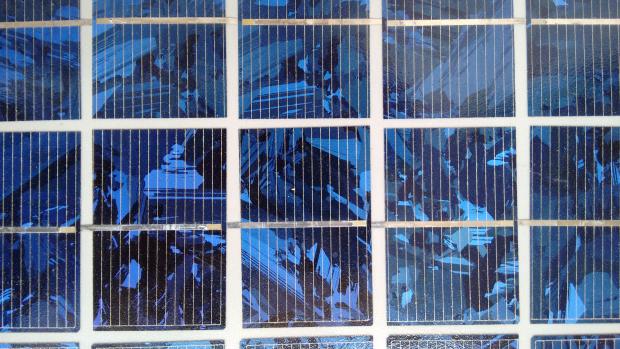
Photo: Sudhira H S/ Research Matters
Solar power has the potential to reverse the environmental challenges faced by the world today. With solar panels becoming economically viable and efficient by the day, solar energy may soon become the prime source of electricity. However, there are a few challenges faced in the process of electricity production through solar energy. In a recent study, researchers at the Indian Institute of Science, Bangalore, have addressed one such challenge while converting the Direct Current (DC) output of solar panels into Alternating Current (AC) required to run our appliances. Dr. Abhijit Kulkarni and Prof. Vinod John from the Department of Electrical Engineering have developed a new start-up method for a compact and efficient photovoltaic inverter that works with solar panels to convert DC to AC.
Traditionally, Photovoltaic (PV) inverters of a few kilowatt power ratings are used for converting DC into AC, which normally have low input voltage. This is especially true when PV panels are connected in predominantly parallel configurations to achieve better performance for rapidly changing insolation and partial shading problems. Transformers are used in such cases to step-up the voltage and provide isolation. High-frequency (HF) transformers are popular over the line-frequency transformers due to their compactness and reduced cost.
“The aim of this research was to build a compact, efficient, high-frequency transformer based photovoltaic inverter feeding power to the grid. While working on this, we observed that the starting up of the inverter posed many challenges due to the multiple stages present in the inverter circuit”, says Dr. Kulkarni, the lead author of the study, describing the challenges addressed in the study. Start-up for an inverter is the method in which the inverter circuit gets out of its 'off-condition' inertia and the normal operation of producing photovoltaic power begins.
This new start-up method proposed by the researchers uses a proper sequence of enabling the different subsystems in the inverter to avoid any possible problems of over-current or over-voltages that can damage the semiconductor components used in the inverter. The performance of the proposed start-up method was validated and compared with conventional start-up schemes using simulations and experimental results. This method does not require any additional power or control circuitry as well, which therefore does not increase the inverter cost or complexity.
“When we started off working on this, we did not have the PV modules in the Electrical Engineering department. We procured them for a total rating of 16.2kW. It was a nice experience to select and oversee the installation of the PV modules on the rooftop. Once we solved the problems that we faced, it was a great experience to observe that the modules installed were continuously feeding power to the grid throughout the day”, says Dr. Kulkarni sharing the interesting experience of the research.
The results of the study are valuable for researchers and industries designing grid connected PV inverters with a high-frequency transformer link. It makes the PV inverters smaller and feed the power into the mains in a safe, efficient, reliable and cost effective manner.
About the authors:
Abhijit Kulkarni is a Postdoctoral Research Associate in the Department of Electrical and Computer Engineering at the University of Illinois at Chicago, USA. Vinod John is an Associate Professor in the Department of Electrical Engineering at the Indian Institute of Science, Bangalore, India. He can be contacted on vjohn@ee.iisc.ernet.in or +91 80 2293 2928.
About the research: The article is based on a research paper presented at Applied Power Electronics Conference and Exposition (APEC), 2016 and published in the IEEE Transactions on Industry Applications.
It is available online at http://ieeexplore.ieee.org/document/7547280.
























